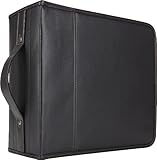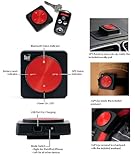ADOT Assistant Communication Director
It would be an understatement to say that we’ve experienced a bit of a surge in our social media audience of late.
Those of us who have spent the last few years working to build ADOT’s online network would love to believe that our spontaneous increase in viewers, followers and readers is due solely to our engaging content and commitment to transparency…
Or, it might have something to do with the photo to the right.
On Feb. 20, a landslide ripped through the mountainside at US 89 in northern Arizona about 25 miles south of Page forcing ADOT to immediately and indefinitely close the highway – a major travel route in an area where – to use engineer speak – there is little redundancy of travel routes.
To help spread the word of the road closure and evolving situation, we immediately took to our social media outlets, starting with tweeting and posting to Facebook the photo above. Within two hours, that single photo had been shared and retweeted nearly 1,000 times. Within 24 hours, the shares of that and related photos climbed to more than 6,000 – leading to a Facebook estimated one-week reach of nearly 400,000 users.
Within 24 hours, a YouTube video explaining the situation had been viewed 5,000+ times. To date, it and two subsequent videos have been viewed close to 50,000 times.
But why does this matter? Sure, they were dramatic photos, but outside of the wow factor, what’s the point?
The simple answer is to rapidly spread important information.
While US 89 is a rural road in a relatively remote part of the state, an average of 5,000 people a day travel that stretch of highway and traffic increases dramatically in the coming weeks when folks around the world head to Lake Powell and nearby national parks and monuments.
So how do we reach people to get the word out that motorists should expect a detour but that Page and the surrounding areas are still open for business? By reaching out to a network broader than just our own.
And this is when social media is at its best…when users serve as real-time information sources to reach an extended, networked audience.
But, what now?
- Yesterday, we blogged about ADOT’s tentative Five-Year Construction Program and asked you to provide comment. And while it lacks the drama of a quarter-mile landslide, it is your opportunity to have your voice heard about the future of your Arizona highway system.
- Do you, or anyone you know, travel in southern Arizona? Then you might want to share this blog post from Monday explaining that a bridge removal in southern Arizona will necessitate the closure of I-10 south of Tucson for about nine hours tonight. (And the only way around is a 67-mile detour.)
- On Monday we will be launching a new public safety campaign aimed at protecting the lives of everyone who drives or works on Arizona roadways. And while we’re still putting some final touches on the website, we thought we’d give you a sneak peek just for being a loyal blog follower.

















